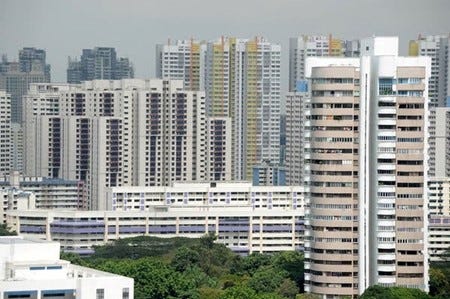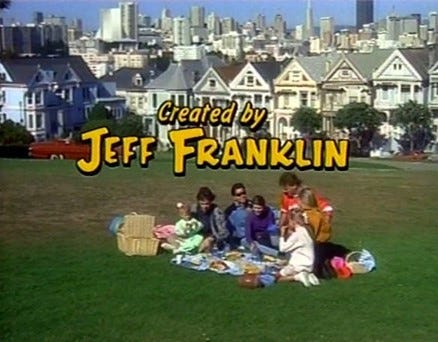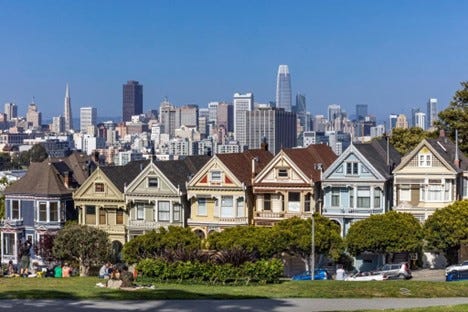Density Appetite
Why Some Cities Thrive on Growth and Others Starve Themselves
Growing up in Hong Kong, I thought density was normal. Seven and a half million people stacked in a vertical metropolis that makes Manhattan look spacious. Then I went to college in Texas, where single-family homes stretch endlessly across vast open land. The contrast made me wonder why some places are dense, and others aren't. There is no single reason for this discrepancy and include environmental, cultural, economic, and historical factors. But it's valuable to address these interconnected elements, which is why I'm introducing the term "density appetite."
Density isn't just a statistic. It's primarily an attitude. Tokyo eats density for breakfast. San Francisco nibbles at it like avocado toast after yoga. One city sees people per square mile as fuel for innovation; the other sees it as a threat to "neighborhood character."
Density Is a Choice
Plot twist: I'm not a density absolutist.
Density comes with tradeoffs, and not every place needs to maximize it. Density pluralism makes for a more interesting world and allows people to find the living environment that suits them best.
What I do advocate for is awareness—understanding that density is the source code of urban life and that it determines how everything plays out:
Look and feel
Housing affordability
Transit viability
Economic opportunity
Environmental footprint
Public space activation
Impact on the natural world
The key is knowing when and where density makes sense. Geography and history matter, but policy, culture, and sentiment matter just as much.
The Growth Gourmands
Some places have insatiable density appetites:
Tokyo: Despite being one of the world's largest and most productive cities, Tokyo has kept housing costs relatively stable through consistent building. Housing supply meets demand because zoning allows it. Tokyo's flexible, incremental upzoning keeps housing in sync with its economy, serving as key economic and cultural fuel.
Paris: Maintains its aesthetically coherent, walkable density while strategically growing at its edges (shoutout to the Grand Paris Express). Hausmann's renovation wasn't just about beauty—it was about structured intensity.
Singapore: Density is a public (even national) resource. The city-state's public housing system accommodates 80% of residents in high-rises that are the envy of every housing advocate. Planned density yields planned openness, integrating transit, green space, and public place into an organized urban assemblage.
These cities don't just tolerate density, they leverage it as their unique value proposition. Their high metabolic rates, how quickly they rebuild, process change, and regenerate themselves, allow them to adapt to new needs rapidly. Their density strategies become signature elements of their urban identity and economic success. In each case, policy translates to lifestyle, and residents accept smaller dwelling sizes as a reasonable trade-off for living in these desirable environments.
Rent Too High? Move to Singapore - The New York Times
The Picky Eaters
By contrast, places like Sydney, Vancouver, and Los Angeles have some of the lowest-density appetites despite booming economies.
California, in particular, has a strange relationship with density. Perhaps it's the state's deep cultural association with individual freedom and the open frontier, or it's about preserving its stunning natural beauty. Either way, it's one of the world's most dynamic economies, yet it often refuses to grow in a way that supports its success.
Nowhere is this contradiction more glaring than in Silicon Valley. The region leads the world in technological breakthroughs, where engineers can fit billions of transistors onto a single semiconductor. Yet, regarding land use, San Jose, Cupertino, and Mountain View can barely fit five housing units on a single acre!
Geography Isn't Destiny
Density is contextual. A city's natural and historical conditions influence how it approaches density.
Land-limited cities (Mumbai, Manhattan) build up by necessity. Sprawling regions (Houston, Dubai) grew around cars and cheap land. Pre-car cities (Kyoto, Barcelona) inherited walkable density.
But culture overlays geography. Tokyo and San Francisco both face seismic risks and geographic constraints. Tokyo's higher metabolic rate means it builds continuously, replacing structures every 30-40 years and keeping housing costs relatively stable despite high demand. San Francisco's slow metabolism results in a city that fancies itself as a museum rather than a living organism capable of change.
The Density Decision
Cities need to define their density appetite to define themselves. At the one-quarter mark of the 21st century, every city needs to answer one question: How hungry are you?
One of the benefits of measuring density is that it distills a simple relationship—the number of people per unit of area. Short of creating more land, density is controlled through population size.
There are plenty of cities willing to do what it takes to maintain a healthy density. Meanwhile, there are plenty who are confused. San Francisco, where I live, is that thirty-five-year-old friend who complains that after a decade and a half of dating, there still aren't enough good choices out there. It wants economic dynamism, affordable housing, and transit options without the physical growth to support it. It defines itself by what it doesn't want to be: New York, Chicago, Los Angeles. San Francisco constantly talks about housing but never says how many people it actually wants. A million residents by 2040? 1.2 million? Without a target, there's no way to measure success—or hold anyone accountable. As the saying goes, you play to win the game - unless you can't decide on what constitutes a winning score.
With a defined growth target, tradeoffs could be evaluated rationally. Infrastructure investments make sense. Zoning changes have purpose. Resistance to development could be framed within an overarching goal.
Target population numbers would bring some much-needed consensus to complex urban concerns. They would also serve as the foundation for professionals to mobilize towards. Architects could propose physical solutions, developers financial strategies, and planners policy changes to get us there. Such a target would be a welcome change from the ten-way tug-of-war that is the process of getting anything built in so many stagnant jurisdictions.
Are We Getting Hungrier?
Density is no longer optional in many cities. Climate change, economic pressures, and shifting demographics force places to reconsider their stance on growth.
That doesn't mean that every city should max out its density. But far too often, cities dismiss density outright instead of considering how it can be used to make situations better.
The psychological condition known as NIMBYism (Not In My Back Yard) is often at play—driven by a fear of change and mistrust that new development will benefit existing residents. Yes, high-trust societies have an easier time demonstrating how urban transformation can improve everyone's lives (have you seen Copenhagen lately?). But especially in struggling cities, communities need to ask if their self-imposed density diet and slow metabolic rate—their inability to process and adapt to change—is starving their own future. Higher-metabolism cities make mistakes faster, but they also correct course more quickly, making them more resilient to economic shifts, population changes, and climate pressures.
We Are What We Eat
The density decision isn't academic, it defines our habitats and their inhabitants. It shapes how we move, work, socialize, produce, and consume.
Cities that refuse density in the face of need don't stay the same. Even worse, they fall behind economically and culturally. Those that build without purpose risk emptiness and obsolescence. The point isn't that every city should maximize density, but that each should intentionally choose its growth pattern rather than drifting into stagnation by default.
So what's your city's density appetite? Is it hungrily building for growth, reluctantly picking at development proposals, or starving itself into irrelevance?
Reply or share this with someone who has strong opinions about their city's growth. Let's put density on the menu.







Love the coinage here. I wonder what you think about walkable suburbs? Ultimately much of the American public wants to walk places but also not live in a city where they have to give up their car.